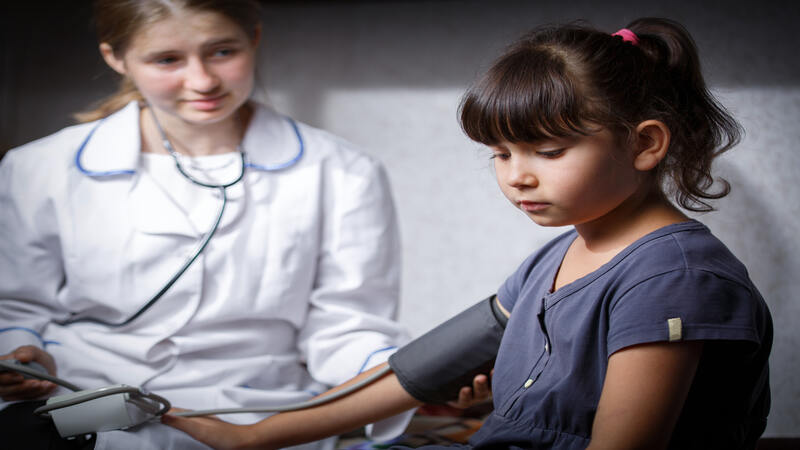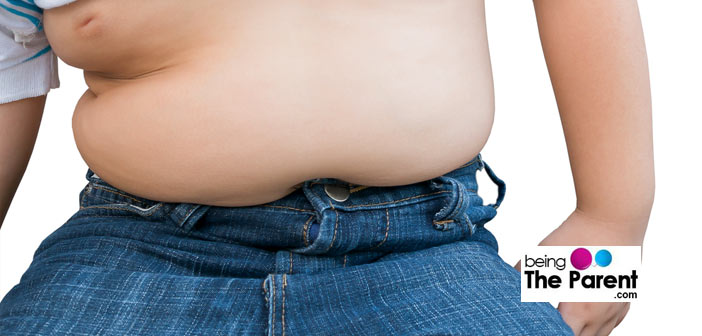
Hypertension or high blood pressure is considered to be an ailment affecting older adults. In reality, this condition can occur at any age, even in infancy. Unfortunately, the number of children diagnosed with high blood pressure has significantly increased and continues to do so. One study shows that cases of high blood pressure has risen to nearly 30% in 2013, all thanks to bigger waistlines dietary carelessness. One of the main causes is the alarming increase in childhood obesity, the culprit for increasing the risk of many disorders including hypertension and diabetes. While we may fling our hands up in despair that there is one more thing to worry about on that infinitely long parenting list, a little awareness and a few precautions can go a long way.
Hypertension in Children
Hypertension or high blood pressure in children is identified when their blood pressure is in the 95th percentile as compared to other children of the same height, weight and sex (the doctor would refer to a standardized chart to prove this). Blood pressure is usually low in infancy and rises slowly with age. Boys and taller children tend to have slightly higher blood pressure than girls or shorter children.
While it poses low risks, undetected hypertension in children can lead to complications like stroke or heart attacks,as they enter adulthood.
Symptoms and Causes of Hypertension In Children
Many children do not exhibit clear symptoms and so blood pressure testing during routine check-ups are now recommended for children over 3 years. However in extreme cases, headache, dizziness, fatigue, visual impairment or shortness of breath may be indicators of hypertension.
Hypertension is technically classified as without a cause (primary) or related to another disease (secondary).In younger children, secondary hypertension is more common and usually related to heart defects, kidney disease or genetic conditions. Older children however, are generally afflicted with primary hypertension due to sedentary or unhealthy lifestyles.
Causes of High Blood Pressure in Kids
The most common causes of primary hypertension are:
-
- High levels of triglycerides and cholesterol in the blood: This usually results from a diet high in unhealthy saturated fats, lack of exercise
- Being overweight or obese: This occurs when children eat more than their bodies need or have a diet high in unhealthy snacks and sugary beverages

- Inactivity: Many children nowadays spend too much time engaged in sedentary activities involving screen time – TV, tablets, smartphones, video games
- Smoking: Even second hand smoking can contribute to other complications and result in high blood pressure
- Genetic: Many children with high blood pressure have relatives with hypertension, implying there might be hereditary aspect as well
Causes of secondary hypertension are linked to other conditions:
- Kidney disease and disorders affecting to the kidney
- Adrenal disorders or tumors
- Hypothyroidism
- Heart defects
- Use of prescription medication or illegal drugs
Obesity and High Blood Pressure in Children
Obesity is the primary cause of high blood pressure in children, along with other risk factor such as sleep disorders and sleep apnea – disrupted breathing in sleep.
Obesity in kids can be due to the combination of too much intake of food and too little activity. Obesity in kids also poses them at a risk of developing diabetes and heart problems.
Treatment and Prevention of Hypertension in Children
Specific treatment for high blood pressure would depend on the doctor’s evaluation and involves considering factors such as the extent of the condition, the child’s age, medical history, tolerance to medications and the parent’s opinion.
If the hypertension is secondary in nature, the underlying disease would be treated. When there is no known cause lifestyle changes such as a healthy, low sodium diet and more exercise would be recommended.

However, if the child’s blood pressure does not reduce despite these changes, medications to relax blood vessels and reduce load on the heart and kidneys would be prescribed. These medications might be required temporarily or permanently depending on the improvement.
As with the old adage, prevention is definitely better than cure. A few steps can go a long way to prevent your child from complications at a later stage.
- A healthy diet Eating healthy and at regular times can avoid obesity. Avoid skipping breakfast and replace sugary processed foods and snacks with foods high in fiber, fruits and vegetables
- Limiting salt content The recommended salt intake for children between 4 and 8 is 1200 mg (1/2 tsp)and older is 1400 mg. Monitor the salt being used during cooking and avoid giving children pre-packaged or processed foods such as instant foods. Limit the fast food intake of your child as they are generally high is salt and trans-fats
- Moderation All of us like to eat junk food, candy and snacks. The key is to limit their intake and ensure plenty of healthy options are also eaten
- Maintain your child’s weight Your child’s dietary intake and the foods he is exposed to should usually be in your control. Keep healthier food options at home
- Encourage physical activity for your entire family Your family sets an example for your child. Fun outdoor activities like cycling, picnics, shopping can encourage a more active lifestyle
While the effects can be long-lasting, a few simple precautions and changes can prevent hypertension. After all, a healthy lifestyle has no disadvantages.

